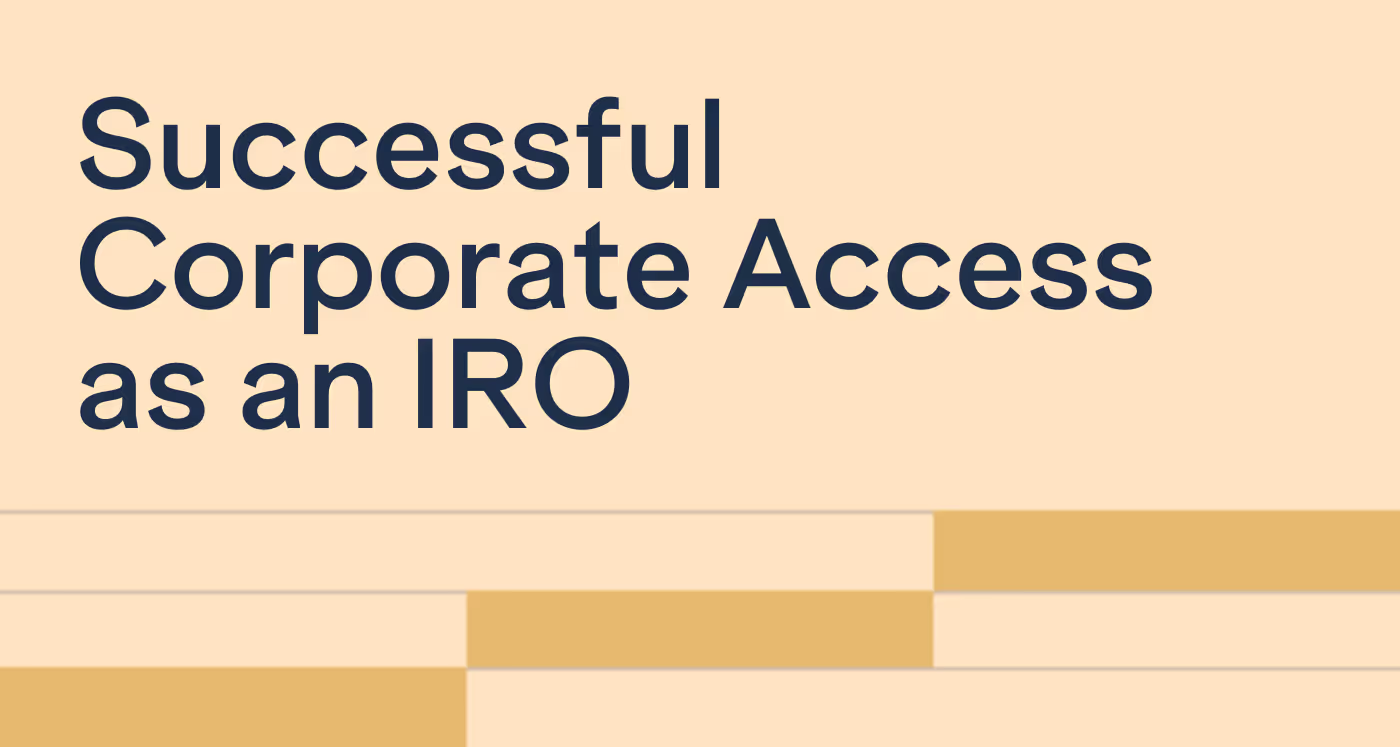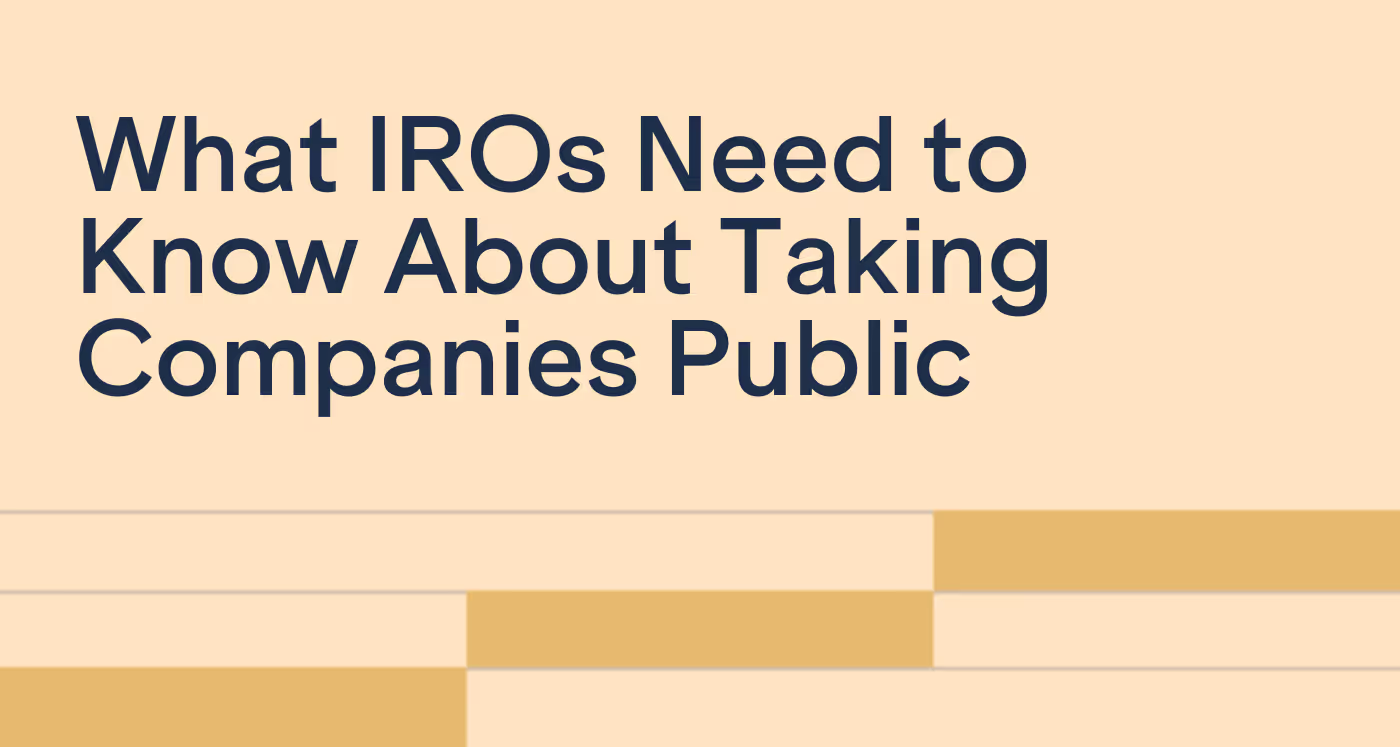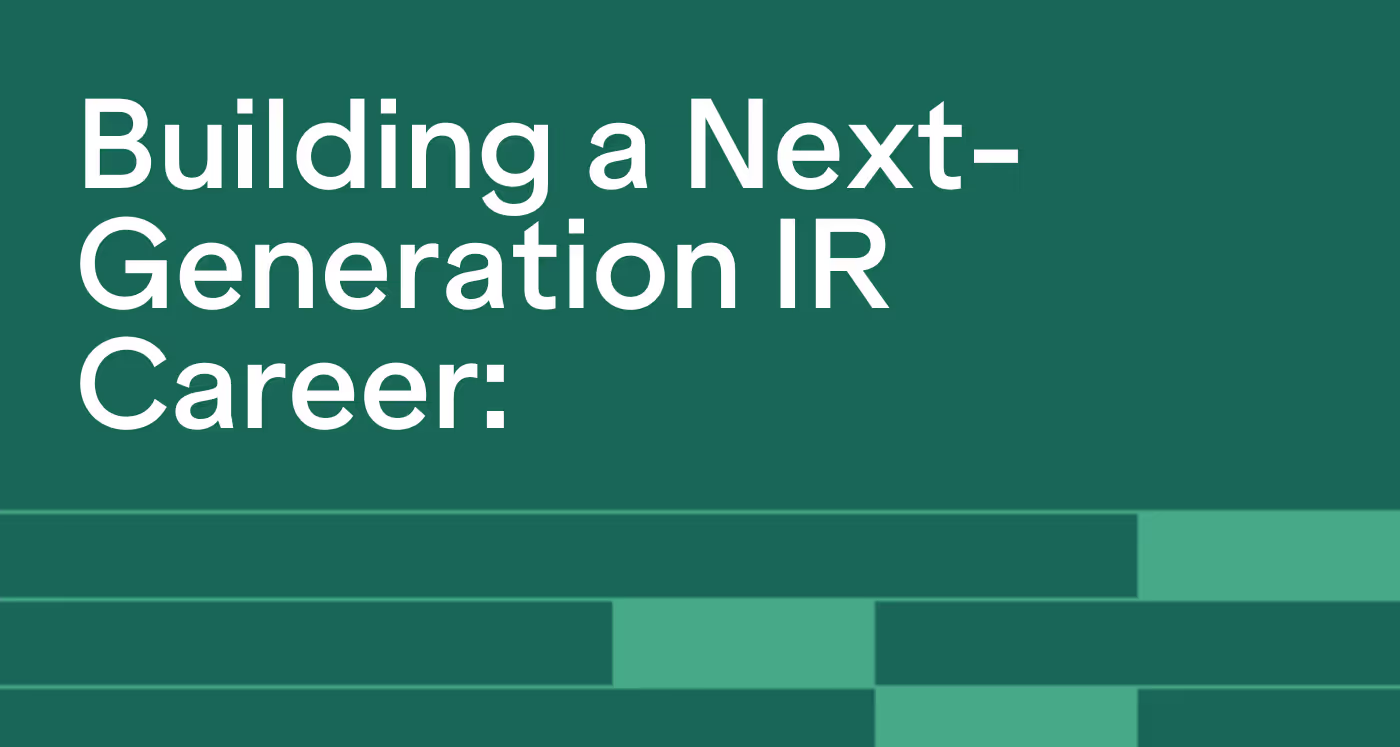
Demystifying Buy-Side Corporate Access: A Guide for IR Teams
Elizabeth Librizzi breaks down the secrets of buy-side corporate access to help investor relations professionals utilize buy-side firms.

On a recent episode of Winning IR, Mark Fasken sat down with Mary Turnbull, Managing Director, Corporate Access, Institutional Equity Sales at Raymond James, to discuss the intricacies of corporate access and how IROs can maximize their outreach efforts.
With analyst relationships ranked as a top priority for issuers and IROs, this conversation offers clear, practical guidance on how corporate access works—and how to make it work for you. Mary shares how firms like Raymond James structure access, the role of sales teams, and what IROs can do to gain more exposure through broker relationships.

Corporate access is a hot topic in today's investor relations landscape, with various formats including virtual, in-person, and hybrid models. At its core, corporate access is about connecting investors with management teams of companies they either own or are considering investing in.
From the sell-side perspective, corporate access teams are the connective tissue between key stakeholders. As Mary explains, corporate access directors sit "in the middle between research, research sales teams, capital markets, and sometimes investment bankers." Their role is to understand the needs of each group and support them accordingly. After corporate access directors determine the strategic direction, an execution team will work with IR departments to build a targeted plan. That includes identifying the right investors, aligning with management travel schedules, and creating tailored investor experiences that make the most of executive time.
According to Mary Turnbull, one-on-one meetings with CEOs and CFOs remain the preference for investors, especially when they want to dive deep into a company’s business. But packed schedules often make these high-touch meetings hard to scale. Conferences provide an efficient alternative, allowing investors to meet with multiple companies over a short period.
"A conference is a super efficient way for an investor to see a lot of different investors at the same time, particularly a sector conference where they can see maybe 10 or 15 companies over two days."
Attendance at industry conferences has surged post-pandemic because they provide more than just access to IR teams. They offer direct exposure to industry trends, competitive dynamics, and customer sentiment. Events like Salesforce’s Dreamforce are great examples: investors can meet with IR professionals, connect with executives, and even observe customer interactions—all in one place.
Not all conferences are created equal. For IROs looking to get the most out of their conference schedule, Mary recommends a strategic approach: plan your year in advance and prioritize events based on geography, investor mix, and analyst relationships.
Location matters. West Coast conferences often draw a different investor base than those on the East Coast. Analyst presence is another key factor—when high-profile, bellwether companies attend, analysts are more likely to prioritize the event.
Regarding meeting schedules, Mary emphasizes that IROs should clearly communicate their targets from the outset. While noting that the sell side will always have priority investors, the IRO plays a key role in ensuring that corporate access is scheduling meetings that are aligned with your company and management’s strategic goals.
"At the end of the day, the company owns the meeting. We on the sell side will always have our priority investors we'd like to schedule. But it's really a partnership. This is a long game. And it doesn't work if we try to jam you with a bunch of meetings that you don't want to have. So, if you're up front, and say, ‘hey, these are three really key meetings that we want to have. Please reach out to these investors and schedule them.’ And then please let us know who are your priority targets. And I think that communication back and forth is really key."
This collaborative approach creates a balanced partnership that benefits both parties. Mary underscores this point:
"You control this meeting at the end of the day. We want to know your targets, we want to share our targets, and we can come up with a really happy medium and a great partnership."
Strong corporate access partnerships are built on clear, consistent communication. Mary emphasizes that IROs should clearly articulate their priorities and goals for specific trips or conferences. This transparency ensures alignment between company objectives and sell-side efforts.
“It all starts and ends with communication. The more an IRO can communicate what the priorities are, what the goals are for a specific trip, or specific conference attendance, that is the key point that really is the start and end of best practices for IR.”
Given today's travel challenges, she also recommends developing contingency plans and remaining nimble when schedules change. "Having that plan in place and understanding that things change and knowing how to manage through them" is crucial, especially when coordinating busy C-suite executives.
Targeting investors remains a persistent challenge for IR teams. While targeting software provides valuable data based on 13F filings, Mary cautions that this data is inherently backward-looking and often outdated by the time it reaches you. To build a more accurate and timely view, Mary recommends a layered approach that goes beyond the software:
This layered approach helps IROs develop a comprehensive understanding of potential investors, ownership patterns, and market movements. Mary encourages IROs to leverage these partnerships to provide management teams with robust targeting insights.
Learn how Irwin helps IR teams conduct deep market research.
Even the most well-intentioned targeting strategies can fall short if they miss a few critical details. According to Mary, here are common pitfalls to watch for:
Small and mid-cap companies often face structural challenges when trying to gain analyst coverage. Many institutional investors have minimum thresholds for market cap and trading volume, making it harder for smaller companies to get on the radar. But that doesn’t mean it’s impossible.
Mary offers practical advice for firms looking to differentiate themselves among lower market caps:
Mary clarifies why providing corporate access to sell-side analysts is essential: "It comes down to economics." Research coverage is expensive, and corporate access represents a significant revenue stream for sell-side firms. Without access, it becomes challenging to justify continued coverage.
"Having coverage is really important. It's part of how being a public company works, and having a good base of coverage is really important, which is why I understand why it's hard for small and micro caps that don't have as much coverage."
Reaching retail investors can be difficult—especially for small-cap companies. Mary suggests using institutional exposure to create downstream retail awareness.
"One of my pieces of advice is to do an institutional event, be it a non-deal roadshow or a conference, because after that event, the analyst will write a report. And the financial advisors at firms have [those reports], and there's a number of the big sell side firms that have a pretty large advisor population, they all read those and they follow the analyst recommendations pretty closely."
These reports influence investment decisions and help raise visibility with retail channels—without needing to organize inefficient branch visits. Additionally, new technology platforms like Irwin are making it easier to engage with hard-to-reach retail investor audiences in a more scalable way.
Mary distills successful roadshows down to thorough planning. This includes anticipating dietary requirements, allowing buffer time for travel delays, and establishing contingency plans for inevitable disruptions.
Regarding preparation, she notes a shift away from printed materials toward digital resources. Most companies maintain comprehensive investor decks on their websites that investors review before meetings. For new investor relationships, Mary suggests IR teams offer preparation calls to address basic questions before CEO meetings. Mary notes that in recent years, there has been more recognition on the sell-side for the value of IR professionals facilitating meaningful discussions.
"The role of IR has really been enhanced, especially over the pandemic period, because people have really realized how much information the IR team has and what they can share."
Successful corporate access is about building relationships, creating visibility, and ensuring alignment between IR, management, and the sell side.
With the right strategy and strong communication, IROs can maximize investor engagement, deepen analyst coverage, and create meaningful long-term value for their companies.
Get more in-depth insights from the Winning IR podcast

Elizabeth Librizzi breaks down the secrets of buy-side corporate access to help investor relations professionals utilize buy-side firms.

What IROs Need to Know About Taking Companies Public: Insights from award winning investor relations thought leader Catherine Buan.

Building a Next-Generation IR Career: Insights from Patricia Cruz, Senior Manager of Investor Relations at Etsy